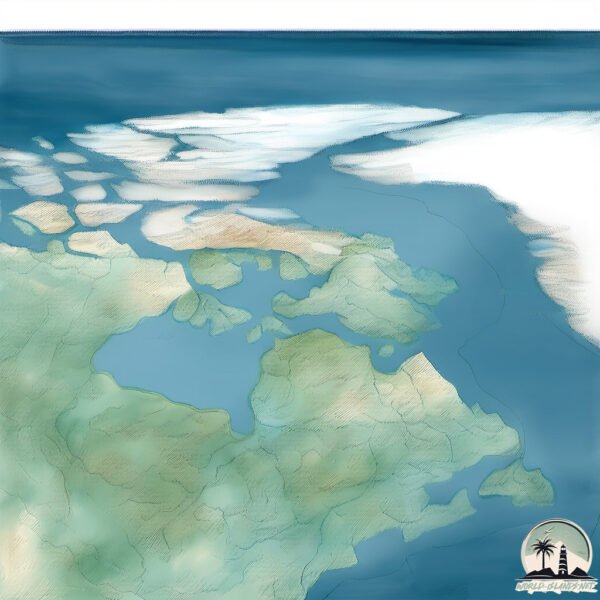Welcome to Baffin , a Polar island in the The Northwestern Passages, part of the majestic Arctic Ocean. This guide offers a comprehensive overview of what makes Baffin unique – from its geography and climate to its population, infrastructure, and beyond. Dive into the details:
Geography and size of Baffin
Size: 1.421 km²Coastline: 8 kmOcean: Arctic OceanSea: The Northwestern PassagesContinent: North America
Baffin is a Small Island spanning 1.4 km² with a coastline of 8 km.
Archipel: Canadian Arctic Archipelago – A vast and remote region in northern Canada, consisting of a series of large and small islands known for their extreme Arctic environment and unique wildlife.
Tectonic Plate: North America – Covers North America and parts of the Atlantic and Arctic Oceans, characterized by diverse geological features and varying levels of seismic activity.
The geographic heart of the island is pinpointed at these coordinates:
Climate and weather of Baffin
Climate Zone: PolarClimate Details: TundraTemperature: Cold
Climate Characteristics: The tundra climate features long, extremely cold winters and short, cool summers. Vegetation is limited to mosses, lichens, and small shrubs due to the low temperatures and short growing seasons. Biodiversity is low, but some specialized species thrive.
Topography and nature of Baffin
Timezone: UTC-05:00Timezone places: America/New_YorkMax. Elevation: 2147 m Mt. OdinMean Elevation: 347 mVegetation: Sparse VegetationTree Coverage: 15%
The mean elevation is 347 m. Dominating the island’s landscape, the majestic “Mt. Odin” rises as the highest peak, soaring to impressive heights. The island is characterized by Mountains: High, steeply elevated landforms. Characterized by both a high maximum elevation (over 500 meters) and a high mean elevation, creating rugged, mountainous terrains on islands.
Dominating Vegetation: Sparse Vegetation
Vegetation: 9 vegetation zones – Very Highly Diverse Island
Infrastructure and Travelling to Baffin
Does the island have a public airport? yes .
Does the island have a major port? yes .
The mean population of Baffin is 0 per km². Baffin is Uninhabited. The island belongs to Canada .
The name of the island resonates across different cultures and languages. Here is how it is known around the world: Arabic: بافين; German: Baffininsel; Spanish: Isla de Baffin; French: Île de Baffin; Portuguese: Ilha de Baffin; Russian: Баффинова Земля; Chinese: 巴芬島
Continuing your journey, Kekertaluk Island is the next notable island, situated merely km away.
The Largest Island in Canada - Baffin Island
Baffin Island is the largest island in Canada & 5th largest in the world. In this video, we'll discuss the amazing people and places ...
The Largest Island in Canada - Baffin Island
Baffin Island is the largest island in Canada & 5th largest in the ...
Baffin Island is the largest island in Canada & 5th largest in the world. In this video, we'll discuss the amazing people and places ...
Baffin Island: A Haven for Arctic Wildlife
Baffin Island is the largest island in Canada and the fifth largest ...
Baffin Island is the largest island in Canada and the fifth largest island in the world. It is located in the eastern part of the Canadian ...
Baffin Island: An Arctic Adventure (award-winning film)
If you don't like freezing cold weather and fierce blowing winds, then ...
If you don't like freezing cold weather and fierce blowing winds, then Baffin Island and the Arctic are not for you.” These words by ...
Canada is classified as Developed region: G7: Group of Seven – Major advanced economies, including Canada, France, Germany, Italy, Japan, the United Kingdom, and the United States. The level of income is High income: OECD.
News – Latest Updates and Headlines from Baffin
Stay informed with the most recent news and important headlines from Baffin. Here’s a roundup of the latest developments.
Loading...
Please note: The data used here has been primarily extracted from satellite readings. Deviations from exact values may occur, particularly regarding the height of elevations and population density. Land area and coastline measurements refer to average values at mean high tide.

